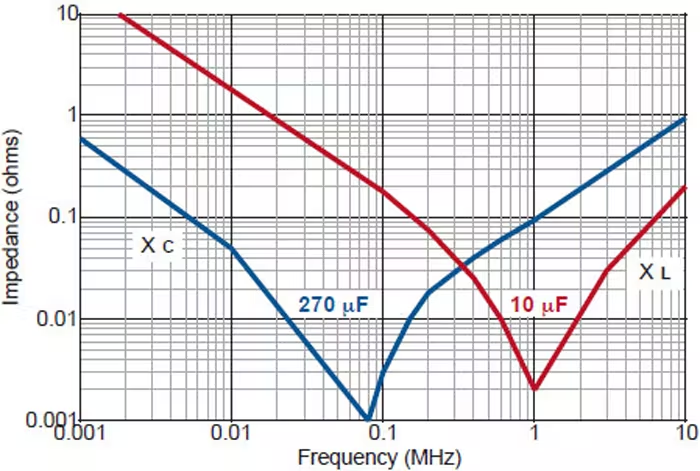Why use capacitors with different values like on the circuit below?
I understand it's a filter, but why not use one big value capacitor instead? If using parallel, which one should be used first and why?
Why use capacitors with different values like on the circuit below?
I understand it's a filter, but why not use one big value capacitor instead? If using parallel, which one should be used first and why?
The short answer is that high-capacity capacitors are not good for filtering high-frequency noises. It's common to use the small ones to filter out high-frequency noises. It is all because the capacitors are not ideal.
An ideal big capacitor must filter any noise bigger than the cut-off frequency of the circuit. The higher the frequency, the better filtration. However, the big capacitor does not work well at higher frequencies in the real world.
There are some good explanations here about how to suppress the ripple: 3 Ways to Reduce Power-Supply Noise
What I'm interested in is this graph in that link:

As you can see, the smaller capacitor impedance is lower than the big one at higher frequencies.
As explained here, the real capacitors can be modelled with small resistance and induction:
Depending on the type of capacitor, the resistance and inductance of the capacitor can be big. The electrolyte capacitors are cheaper and wildly used in such filters. However, they have a bigger inductance.
Electrolytic capacitors are constructed from two sheets of metal sandwiching an electrolytic layer. Electrodes are attached at opposing ends. The sandwich is then rolled up wit a sheet of paper separating the electrodes to prevent shorting. The roll is placed in a cylindrical can.
The rolled up conductors act as an “equivalent series inductance” (ESL). At higher frequencies the capacitor looks like an inductor.
So a non-inductive ceramic capacitor is placed in parallel.
High value ceramics are impossible to manufacture, so the electrolytic is preferred for high values need for low reactance at low frequencies. The low reactance at higher frequencies can be had from a low capacitance.
This is why it is done.